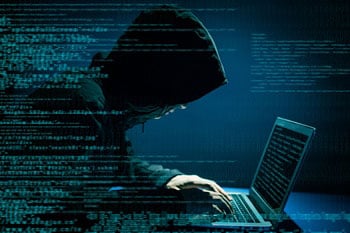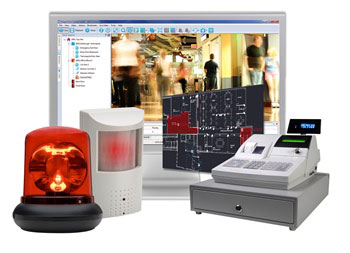
People counting technology and its opportunities for use beyond COVID-19
Why are we talking about people counting technology?
The concept of people counters, or occupancy monitoring technology, has become a much greater priority for many organizations in 2020 than anyone would have expected just a few months ago. With the spread of the COVID-19 pandemic globally, it has become vital for businesses to limit the number of people on their premises at any one time, in order to ensure social distancing and provide healthy and safe environments for their staff and the public.
When entering a large shop recently, you’ve most likely seen a staff member on the door manually counting people to decide if they can enter based on others exiting, to ensure that the maximum store occupancy is not breached. This has been a simple method to enforce across a wide range of markets, but it’s not the most efficient or the safest way to do so. Installing security technology on entrances and exits that use Artificial Intelligence to automatically manage occupancy levels means that you can free up staff time and protect employees from the risk of contracting COVID-19 from individuals standing close by in a queue.
In the light of the pandemic, many organizations are weighing up the investment of people counting technology and whether it can pay back this investment over the long-term. In this article, we look more closely at the benefits that this technology can bring organizations during the current crisis, as well as take a look at the opportunities for people counting technology to enhance smart surveillance systems and provide value beyond COVID-19.
How can I make my organization safer for employees and the public?
Understandably and importantly, the key priority for organizations right now is to ensure that their premises are safe and healthy to inspire confidence for people restarting their normal activities; whether that’s returning to work, sending children back to school or visiting shops. Additionally, organizations need to keep track of occupancy levels because governments in some countries are leveraging fines against businesses if too many people are found on their premises.
Installing security systems with automatic people counting technology, powered by Artificial Intelligence, enables organizations to manage resources more efficiently, limit occupancy numbers and achieve social distancing. An easy-to-install solution such as IndigoKiosk AI supports organizations to:
Ensure social distancing: Artificial Intelligence enables you to always comply with the latest regulations on occupancy numbers, by tracking entrances and exits from your establishment. Instead of putting staff members in potentially unsafe situations, a monitor at the entrance to your premises will automatically display the number of people in your venue and inform visitors if they are free to enter.
Create healthy environments: an additional layer of protection is provided by IndigoKiosk AI which monitors whether individuals wishing to enter the building are wearing a face mask. Artificial Intelligence software within the cameras can identify whether the individual is wearing a mask and if they’re not, a screen will display a message informing them that they must wear their mask before entering. In-built alarms enable security managers to respond immediately to non-compliance.
Be flexible in scope: IndigoKiosk AI can analyze entrances and exits for venues that can accommodate up to 10,000 people for maximum occupancy. These 10,000 people can also then be screened automatically for face mask detection. This means that whatever your size of business, your visitors can be confident that you are ensuring their safety.
Open multiple entrances and exits: your staff won’t have to manually count how many people are on your premises, so you’ll no longer have to limit your customers to using only one entrance. The system will automatically calculate how many people can enter/exit through multiple doors, using information captured by the Artificial Intelligence in your cameras, which automatically identify the number of people passing through.
Adhere to local guidance: the IndigoKiosk AI solution is flexible and you can set it up to comply with your local government regulations.
Beyond Covid-19: Smart Surveillance Systems with Occupancy monitoring
Incorporating people counting technology is incredibly helpful to restore public confidence as businesses start to reopen. We’ve seen that organizations worldwide are responsibly choosing to install solutions that will benefit the health and well being of their staff and visitors. However, it has led to some questions over whether these solutions will become unnecessary once the pandemic has been brought under control and social distancing rules are relaxed.
Once the pandemic has passed, IndigoKiosk AI’s features can be adjusted to suit the changing regulations. For example, the Artificial Intelligence-powered software that detects when people are wearing a mask and the monitors which currently warn visitors to wear one can be adapted to enhance security by asking people to remove their masks before they enter a building. But organizations looking to invest in the technology often need further applications to be able to justify their investment in the long-term.
From university campuses to amusement parks, people counting technology is already being used to monitor peak hours for visitors, which can inform requirements for staffing, resource allocation and future expansions. In fact, practical applications of occupancy monitoring can be seen already in a variety of industries, enabling organizations to get back their initial investment in the technology and enhance their security systems:
Enhanced retail analytics
An interesting application for people counting technology in the retail sector is the ability to calculate the conversion rate of visitors who enter stores and consequently measure the profitability of marketing campaigns, product launches etc. Put simply, the people counting technology provides retail outlets with the data to understand how many people enter the store. This can then be compared with data from the cash register regarding how many people made a purchase.
This information could be used to make decisions based on performance on specific days or even longer term, to measure rising or declining sales. It could be also used to compare the performance of outlets in different locations, to inform decisions on closures or opportunities for expansion.
Better public attractions
Local governments must justify their investment in publicly funded spaces each year, and people counting technology can provide the data to better direct and more efficiently target where public investment goes. For example, monitoring occupancy at local attractions such as museums, libraries and parks will provide statistics on visitor numbers which are required to justify future investment. Investment and improvement in attractions which are already popular among local people can help the local area encourage and engage new visitors too.
People counting technology can also provide data on visitor numbers to inform operations managers about the resources required to staff and secure facilities adequately: if certain attractions are much busier on the weekends, staff levels can be adjusted easily to ensure a safe environment for the public.
What are the implications for the public?
Changes in the way that organizations use technology to measure visitor numbers on their premises can cause hesitance and distrust from the public, due to a lack of information about how this will impact their privacy, what the data will be used for and how images will be stored. It is therefore vital that security managers optimize their systems to comply with local regulations and communicate with their customers to make sure they feel confident and safe when they visit your business.
IndigoKiosk AI ensures public privacy is maintained and protected because only the Artificial Intelligence installed within the camera carries out the image analytics. Data is then only sent to the IndigoKiosk AI software in the form of a binary number (1 or 0) to represent occupancy levels, so images are not actually sent from the camera or stored by the IndigoKiosk AI software.








